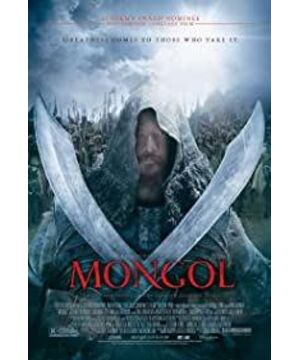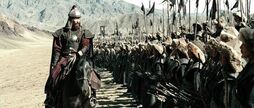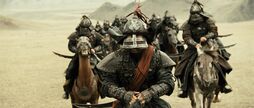The content is transferred from the article "Yuanyi Jing" of Baidu Encyclopedia.
In the battle of Yichuanguan, Yuanyi fled north and crossed the sea to Mongolia through Hokkaido, and became the overlord of a generation, Genghis Khan. There is no basis for this claim. Kang Zi said: "In 1935, a Japanese porcelain wine bottle with the inscription 'Islanding' was unearthed in Kedong County, Heilongjiang Province. After this discovery, some Japanese scholars believe that the discovered wine bottle was made during the Liancang period in Japan. It was brought by the missing samurai Yuan Yoshitsune in the north, and Yuan Yoshitsune was the arrogant Genghis Khan, who was a generation of giants in the world. The place where the wine bottle was unearthed was Yuan Yoshitsune's original residence. A Mongolian king's cemetery in the cemetery of Genghis Khan was verified to be the tomb of Genghis Khan, that is, the burial place of Yuanyijing. This kind of anecdote was not only widely publicized in the newspapers, but also written in works such as "Genghis Khan is the source of Yijing". (This statement is due to the Lack of actual evidence, not accepted by the general public) The prototype of this theory was first born in the Edo period. At that time, there was a rumor, which claimed to have appeared in the imperial text of Emperor Qianlong that "the ancestor's original surname is 'Yuan', taboo'" Yoshitsune', the world came out with 'Qinghe', and the old country was called 'Qing'. He said that there was a general named "Yi Jing" in the Jin Dynasty in the 12th century in the "Golden History". The original legend was written by Philipp Franz von Siebold, a German doctor who once traveled to Japan. ) was recorded in his book "Japan", and Kensumi Suematsu, a Japanese student who later studied in London, published his graduation thesis "Yoshitsune Zaixingji" based on it. By the Meiji era, Japan was actively reforming and expanding its empire overseas. The territory, especially Manchuria, which is rich in products, is the jewel in front of its eyes. In this context, the above legend has further evolved into "Genghis Khan's theory." Kotanibe Junichiro, known as the "Savior of the Ainu", while working in Hokkaido to solve the problems related to the aborigines Ainu, he also heard that the god "オキクルミ" believed by the Ainu is the source of Yoshitsune. In order to investigate the truth of the legend, Kotani collected a lot of information, including the theory that the Yuan Yoshitsune traveled westward to Mongolia. So he went to Manchuria and Mongolia to conduct field investigations, and in 1924, he published "Genghis Khan is the Yuan Yoshitsune" "(Genghis Khan ハ Yuan Yoshitsune also) a book. The book became a bestseller because it was in line with the expansionist trend of imperialism at that time, and the theory of Genghis Khan quickly became widely known. The inferences put forward in the book are mainly based on two: "Yoshitsune from the Source" The Japanese pronunciation of "ゲンギケイ" is very similar to the Japanese pronunciation of "Genghis Khan", "Jin ギス". The Mongolian tribe's emblem is similar to the Genji family crest "Sasakagi".
View more about Mongol: The Rise of Genghis Khan reviews










